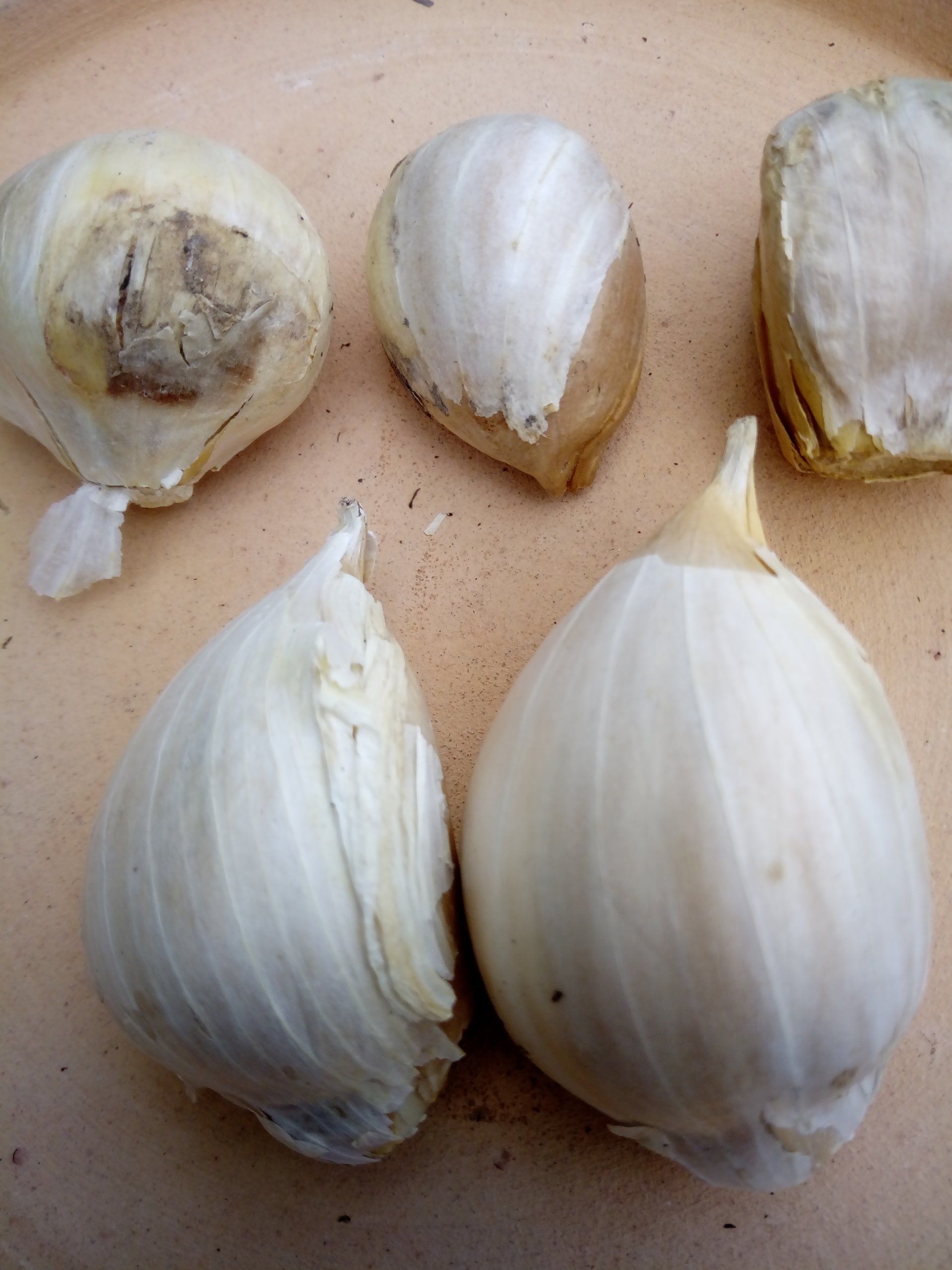Growing Elephant Garlic (Allium ampeloprasum)
Elephant Garlic is actually more closely related to a Leek than Garlic, even though its cloves resemble large garlic cloves. It has a sweeter and milder flavour than standard garlic so it is ideal if you are after just a hint of garlic and not the full hit, it is especially good for roasting. The best time to plant Elephant Garlic is October as it is more likely to produce cloves, rather than one small bulb. However, you can still plant Elephant Garlic right up to February. If you are short on space you can plant Elephant Garlic in containers as long as they are deep enough for the roots. Just fill your chosen container with a multi-purpose compost and plant the same distances as listed below. Do not plant Elephant Garlic in soil that has recently been used to grow Garlic or ornamental Allium. Early autumn planted cloves will be ready to harvest in June or July, winter cloves as late as August.
Elephant Garlic Cloves
This picture shows 5 Elephant Garlic cloves that were ordered online. As you can see they vary in size however, they are all bigger than standard Garlic cloves.
Break the bulb into individual cloves, if not already done so. Then make a trench in your soil to place your cloves. They need to be planted point upwards about 2.5cm (1 inch) deep and 20 cm (8 inches) apart. The rows should be 30 cm (12 inches) apart.
Elephant Garlic like a sunny site that is well drained. Elephant Garlic do not acid soils so you will need to add lime if your soil is acidic.
In a few weeks green shoots will appear above ground. Your Elephant Garlic will then be ready to harvest in the summer, during June or July.

